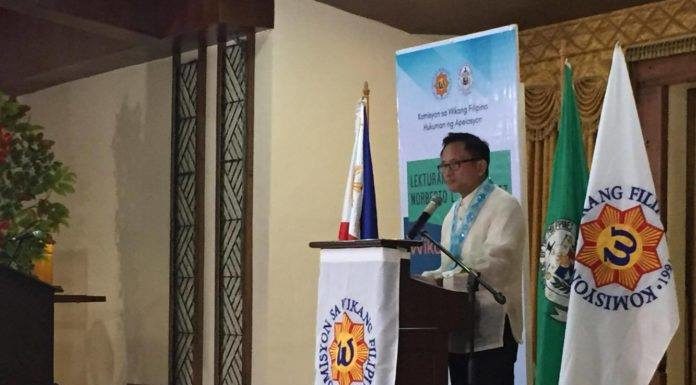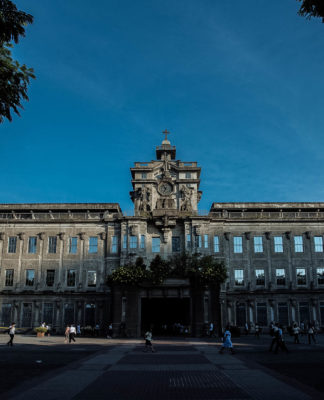THE YOUTH must face the problem of child pornography in the Philippines.
This is the call of Batingaw, a nationwide campaign against child pornography launched by the Anti-Child Pornography Alliance (ACPA) and Iskolar, an institute for youth development.
“We are the main victims of this evil in society,” said Lean Peace Flores, chair of the ACPA-Committee on Children and Youth Concerns. “Child pornography leaves far-reaching effects that may last a lifetime because these are lasting testaments of a child’s exploitation. It excuses no one: children who have access to cell phones with cameras are vulnerable to it; thus the proliferation of sex videos of minors taken through cell phones, finding its way ultimately to the Internet.
“As the (number) of the victimized children of pornography in the country mount, we (the youth) will not be heedless and neglectful. We will act and pave the way for a suitable response to resolve the crisis to ensure a better future ahead of us,” said Flores during the Batingaw’s caucus last Sept. 7 at the De La Salle College of St. Benilde.
‘A neglected, vague issue’
Child pornography in the Philippines is a vague and neglected issue, according to Prof. Arnie Trinidad of the Psychosocial Support and Children’s Rights Resource Center of the Philippine Social Science Center.
“A 2005 study of the United Nations Children’s Fund found out that child pornography has vague meanings to a lot of people,” Trinidad said. “Many people merely think of child pornography as reproductive health discussions on science textbooks used in high school.”
This is compounded by the problem that Philippine laws hold no formal definition of child pornography, though legislation against pornography in general exists, according to Prof. Aloysius Marana of the ACPA National Secretariat.
“Because we do not have a law specifically dealing with child pornography, we cannot prosecute people engaged in the trade,” Marana said. “Other laws may deal with pornography generally, but once our police encounter a suspect engaged in producing child pornography material, they do not know upon which law or on what grounds they should arrest the offender.”
Marana said that legislators of the 14th Congress have promised to file bills defining child pornography.
Marana told the delegates that in order to combat the problem, three fronts should be addressed.
“First, we must establish a protective environment, which includes lobbying for legislation against child pornography,” he said. “Next, we should participate actively in the drive against child pornography. Lastly, we should take part in rehabilitation of the victims, which requires empathy and compassion.”
Media and child pornography
In the parallel talks during the afternoon, Alecks Pabico, multimedia desk head of the Philippine Center for Investigative Journalism, stressed that generally the media are not interested in child abuse stories.
“There is a lack of interest in the media for children’s issues,” Pabico told campus journalists who attended the parallel session. “There is hardly any report on the effects of new media.”
Pabico added that one of the journalists’ crucial roles should be to report on children’s rights and abuses.
“Lack of reporting on child pornography contributes to the proliferation of crimes against children,” Pabico said. “Therefore, reporting on child pornography will help deter commission of these crimes.”
Reporting child pornography, according to Pabico, should shed light and understanding, going beyond problem identification and showing how the problem arose. Pabico said that this kind of reporting goes beyond the usual method which treats the children as victims in a sensational manner.
Side-by-side with the youth
The Church has also come forward to support the youth in their fight against child pornography.
Melo Acuña, managing editor of the CBCP Monitor, said that the Catholic Bishops’ Conference of the Philippines (CBCP) will be working side-by-side with the youth to look for ways of reporting pornography.
“The CBCP Ad Hoc Committee on Pornography is pioneering a plan enabling local parishes, schools, and other religious groups to report on cases of child pornography in their area,” Acuña said. “We are testing the scheme now in the Diocese of Bacolod.”
He commended the efforts of Batingaw in addressing the issue. A walk against child pornography will be held on Sept. 28.
“This symposium on child pornography is important,” Acuña said. “Poverty may be a reason for pornography, but it is not an exuse.”
Speaking before the parallel sessions began, Caloocan Bishop Deogracias Iñiguez lauded the youth for supporting the anti-child pornography advocacy.
“You chose to confront the problem,” Iñiguez said. “I pray that you may find the solution to this evil plague that is ravaging society. God is very happy with all your intentions.” Nathaniel R. Melican















